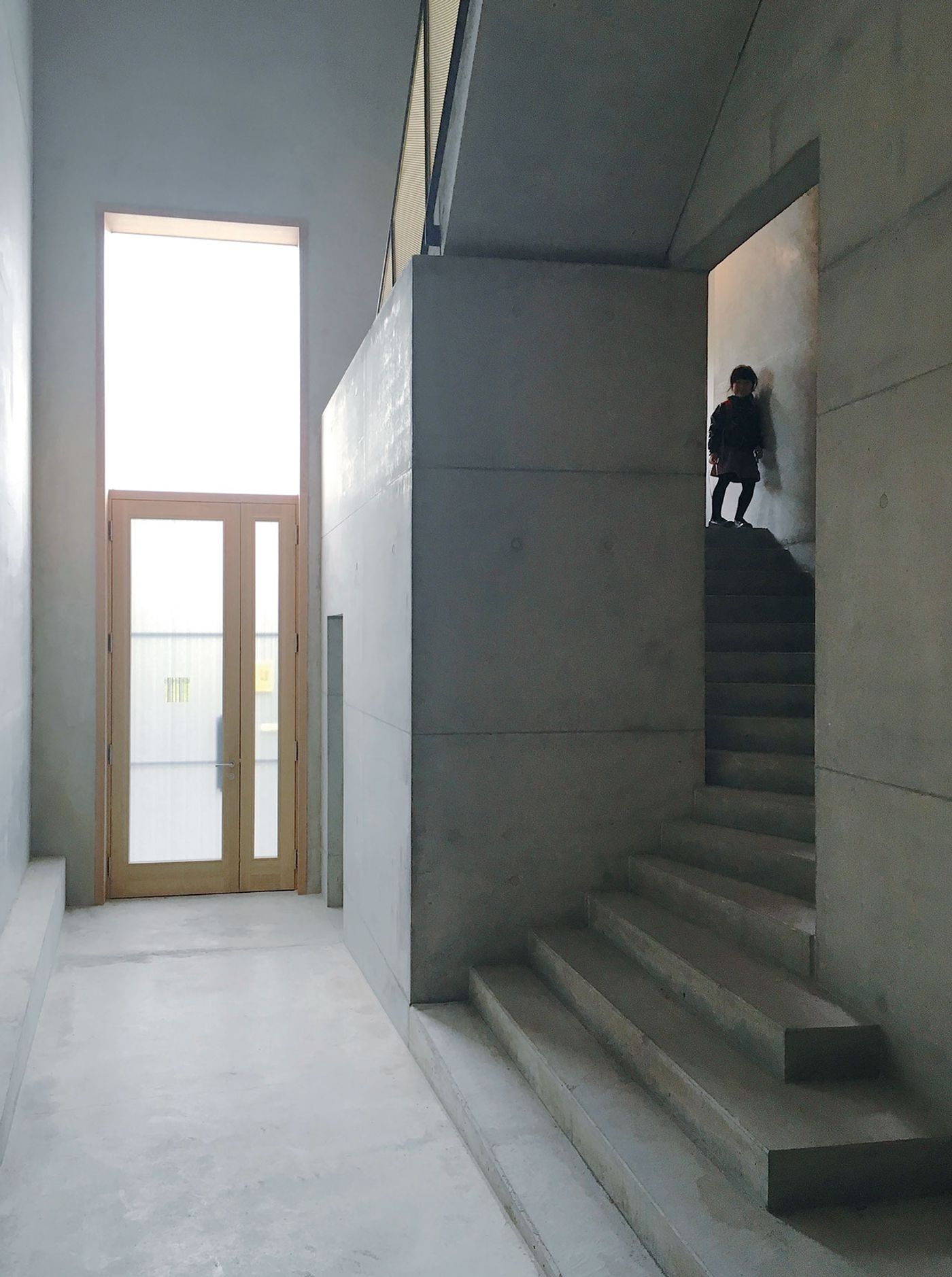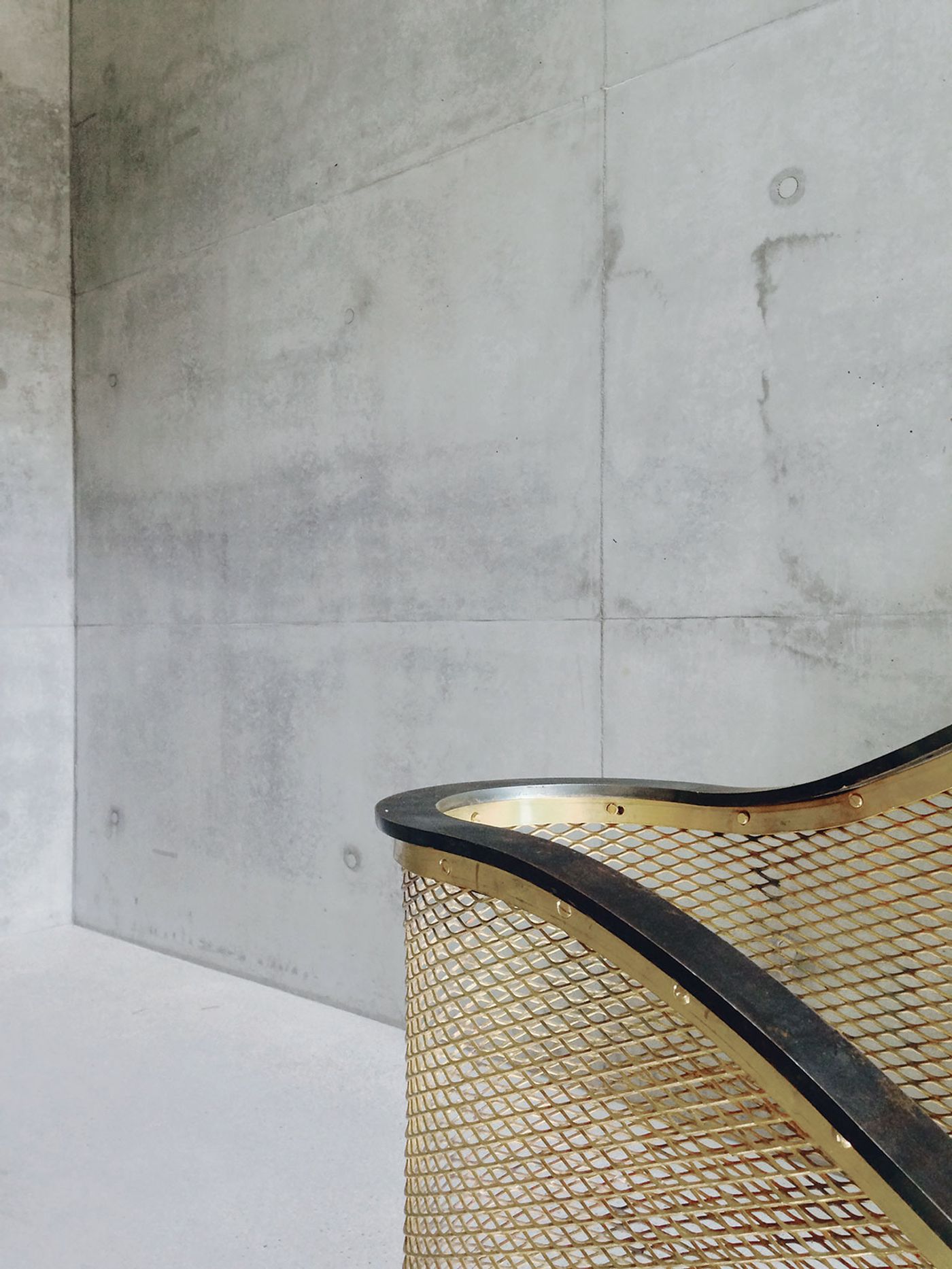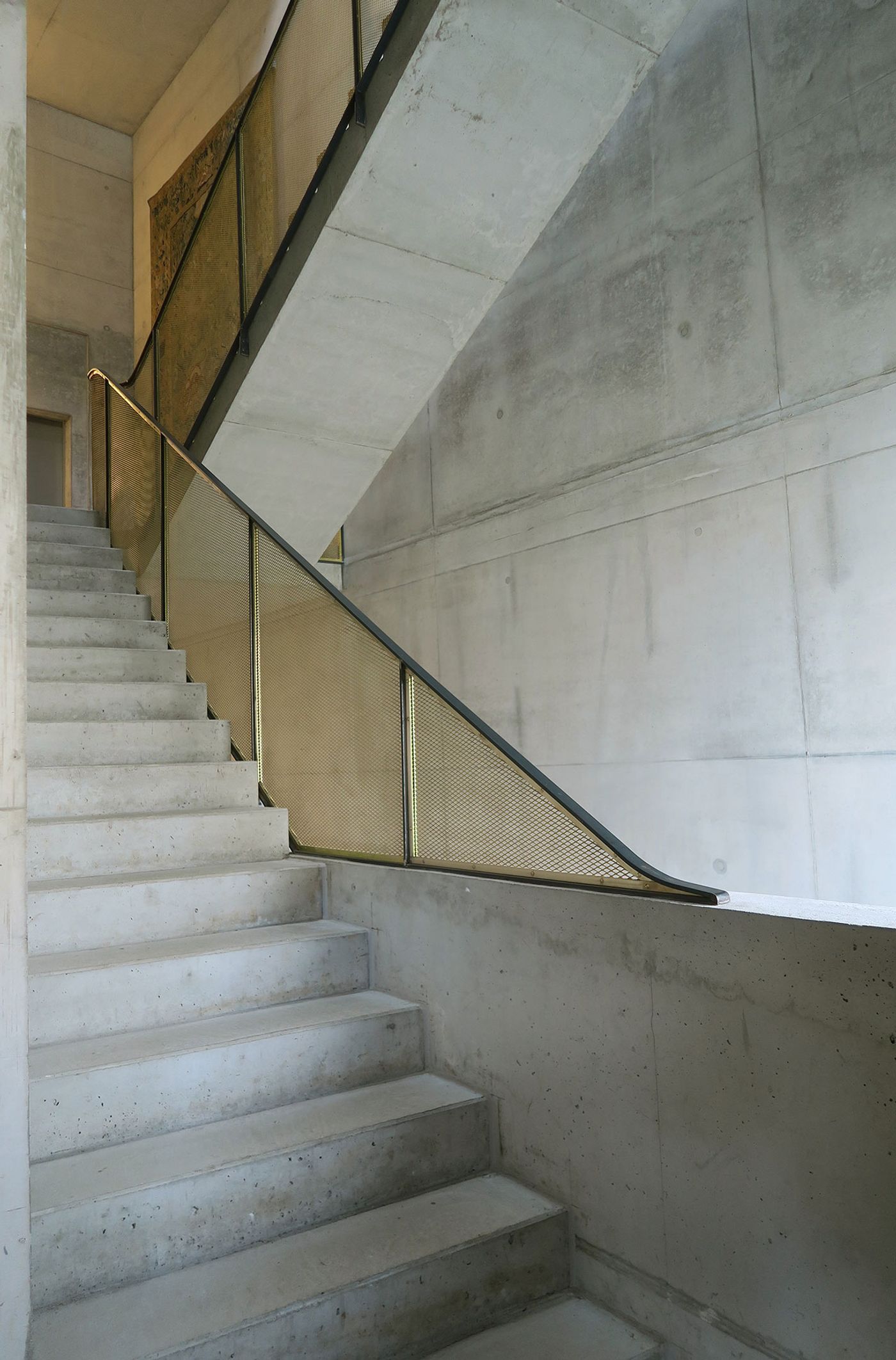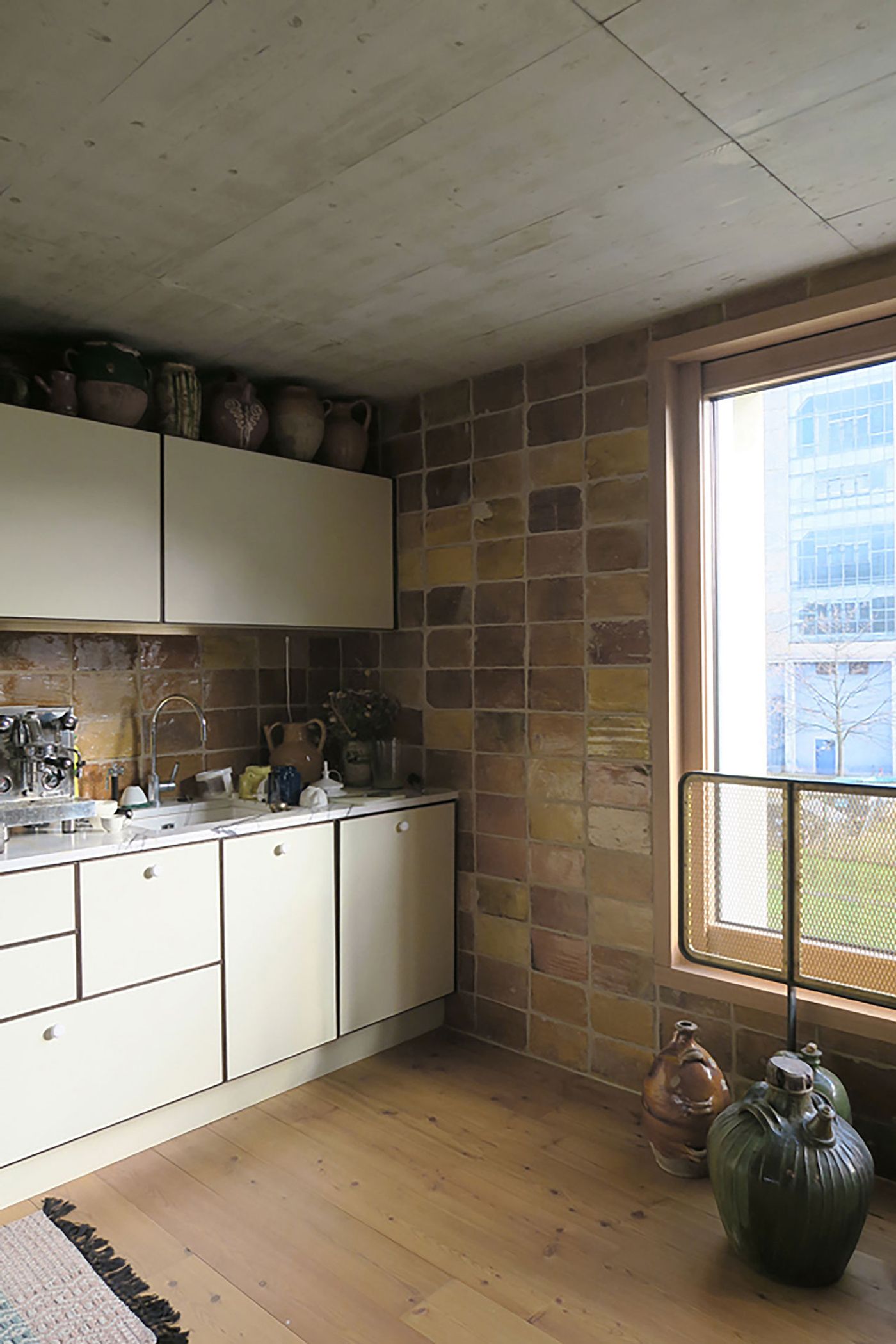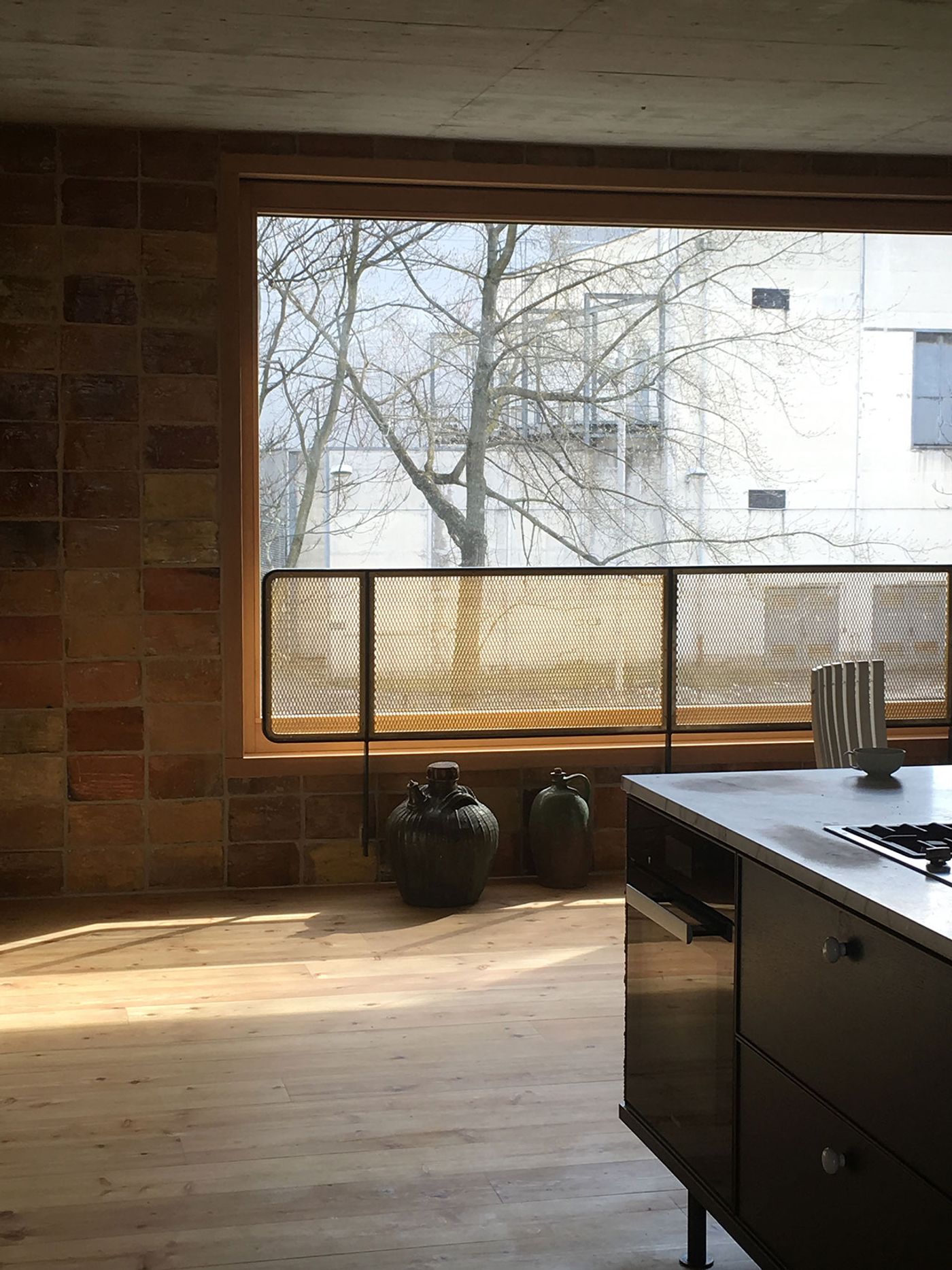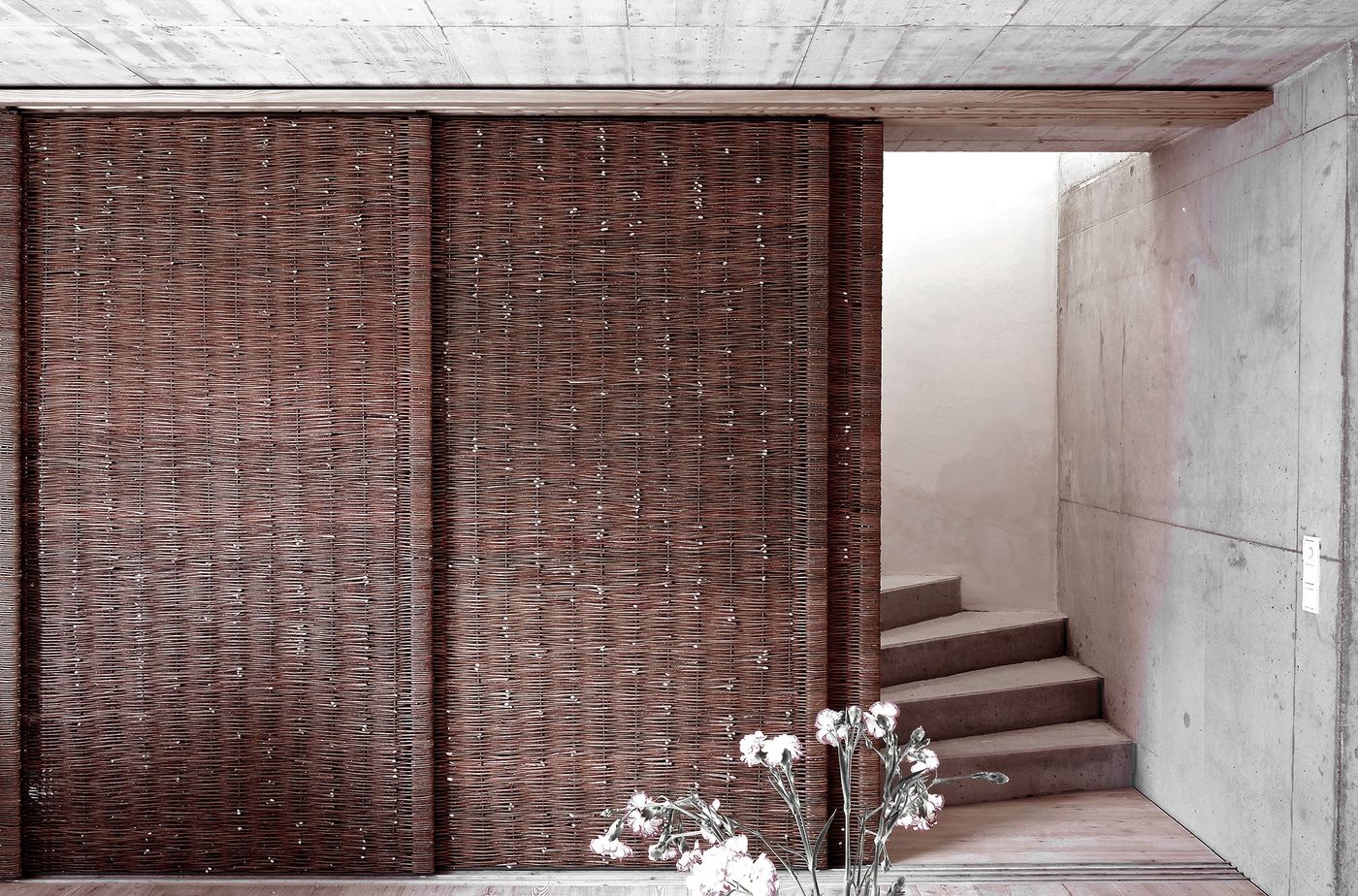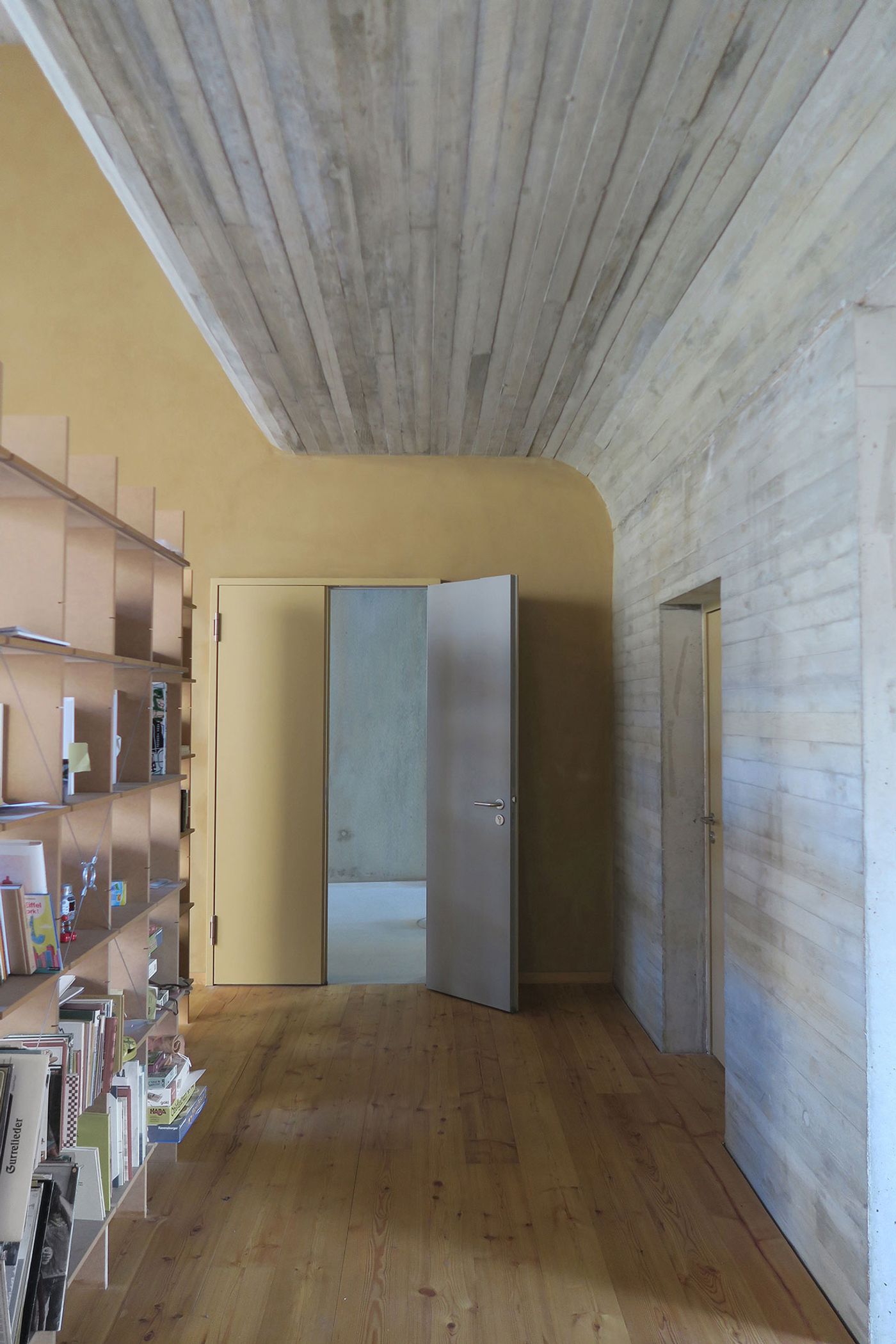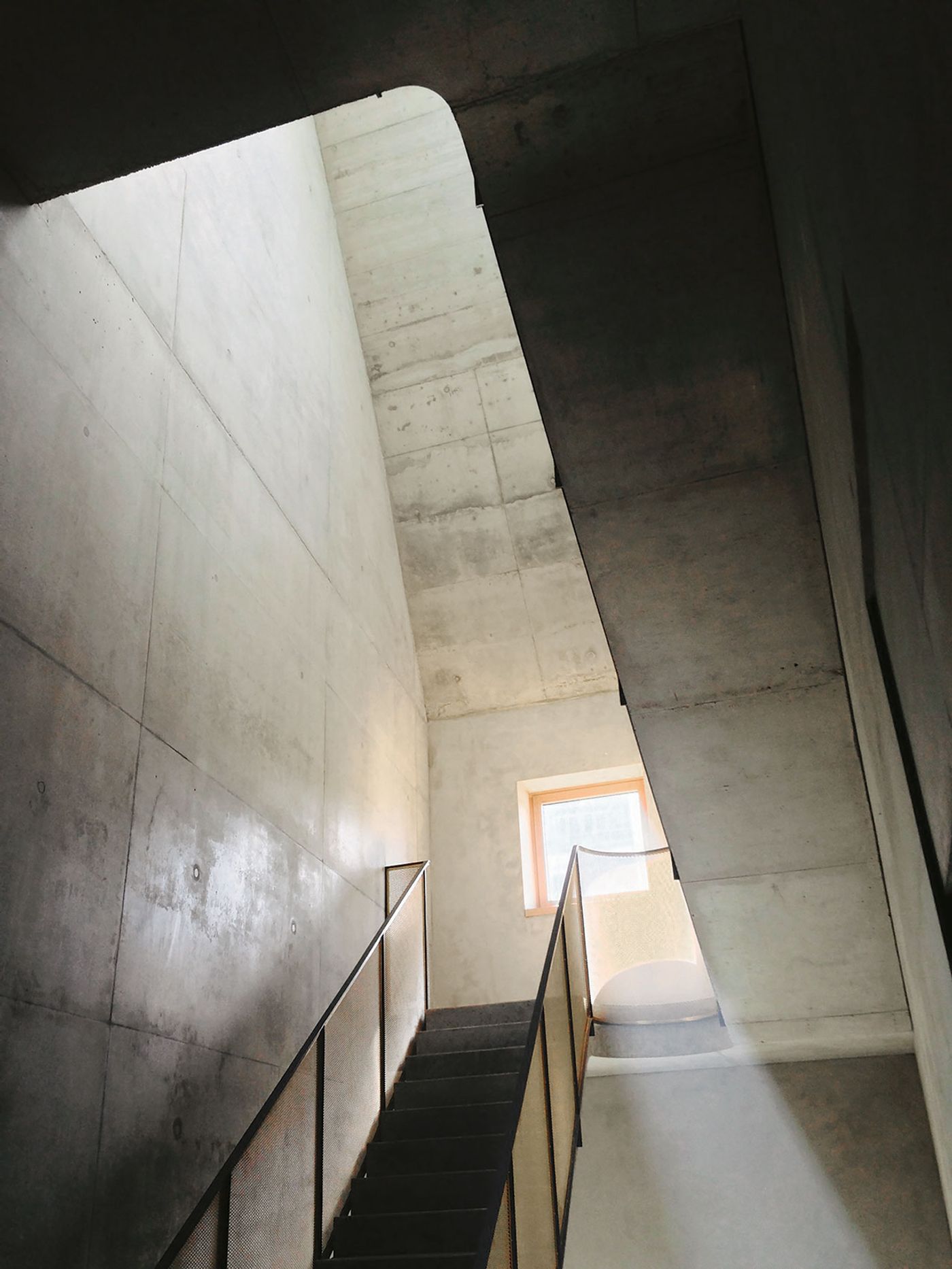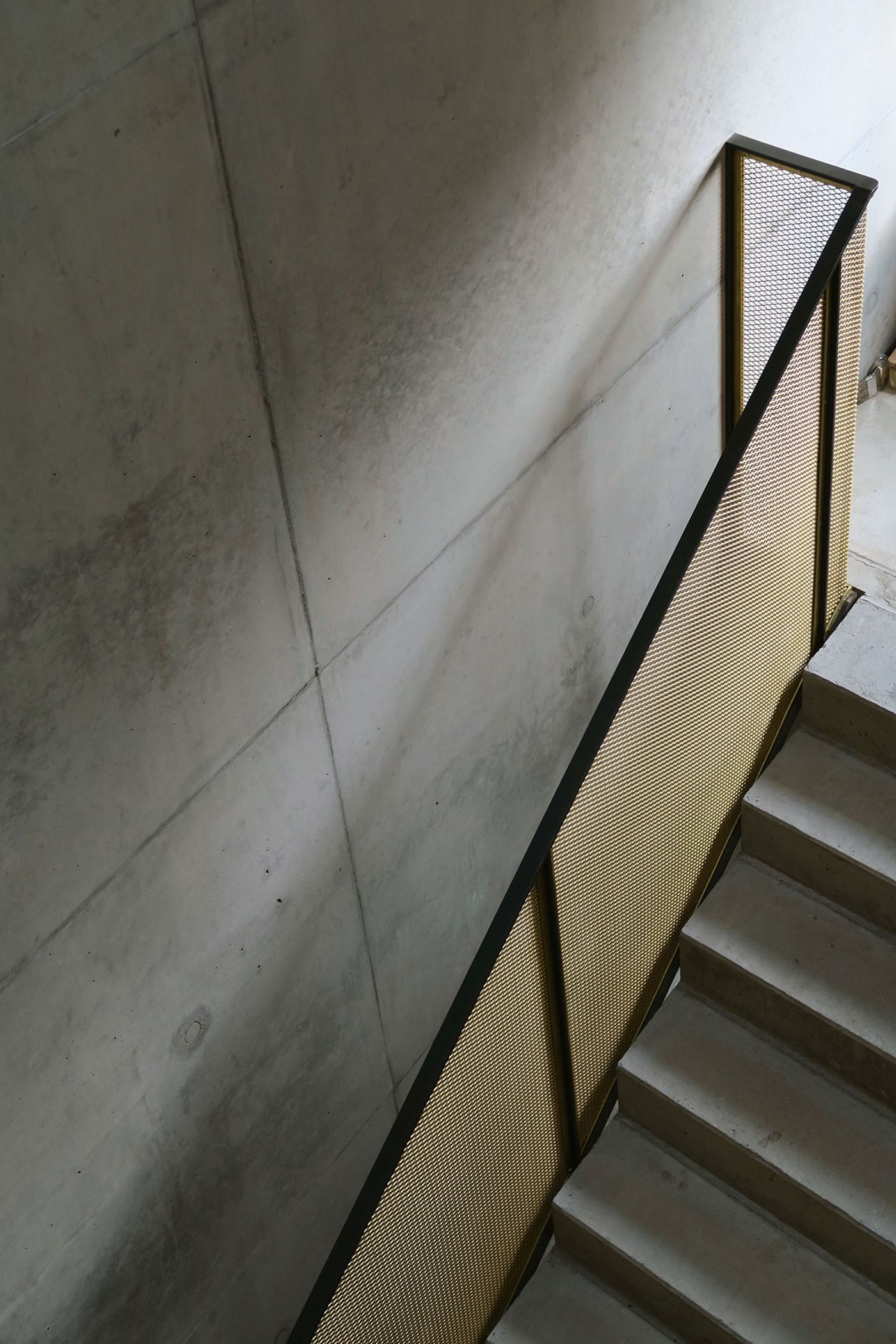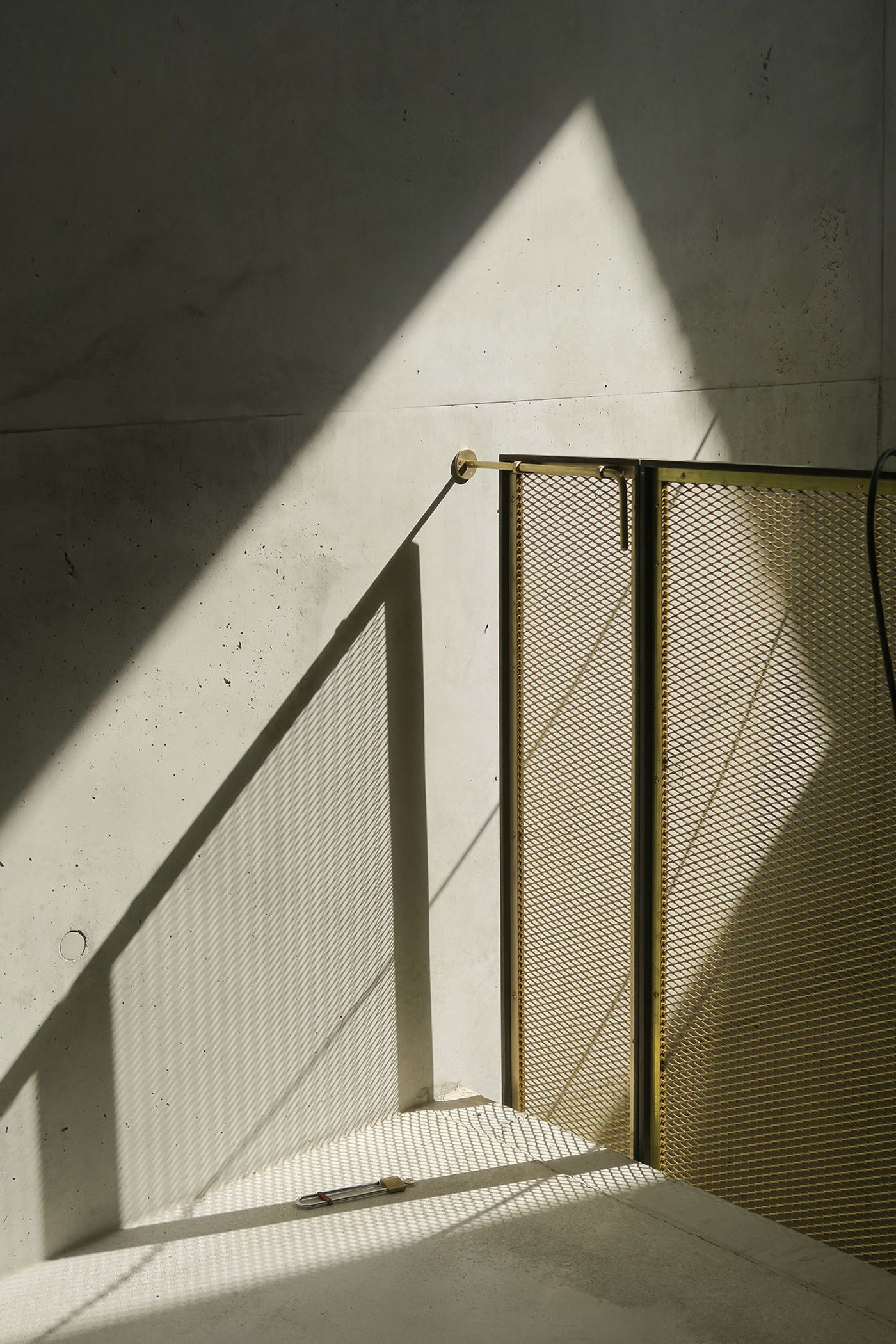
Philipp von Matt Designs an Artist's House in Berlin as a Hybrid Work of Sculptural Architecture
Words by Eric David
Location
Berlin, Germany
Philipp von Matt Designs an Artist's House in Berlin as a Hybrid Work of Sculptural Architecture
Words by Eric David
Berlin, Germany
Berlin, Germany
Location
Designed as a hybrid work of art and architecture by Berlin-based architect Philipp von Matt Architects this unique house in Berlin’s central Mitte district is the home and studio of a well-known French artist, effectively functioning both as an incubator for art and as a sculptural environment to live in. Brutalist in sensibility and minimalist in aesthetic, the house unfolds a series of grand, light-filled spaces that nevertheless feel warm and familiar. Imbued with a strong sense of materiality, the pared-down interiors balance the industrial aura of the exposed concrete structure with rich, tactile accents and unexpected views with the same thoughtfulness that the house’s design balances the owner’s professional and private life.
From the outside, the four-storey building stands out for its irregular window design, an abstract composition of squares and rectangles of different sizes that subtly echo the rhythm of the surrounding buildings while also resembling a De Stijl painting, with the façade’s graphic, two-dimensional design intentionally providing no clue of the immersive, sculptural spaces awaiting inside.
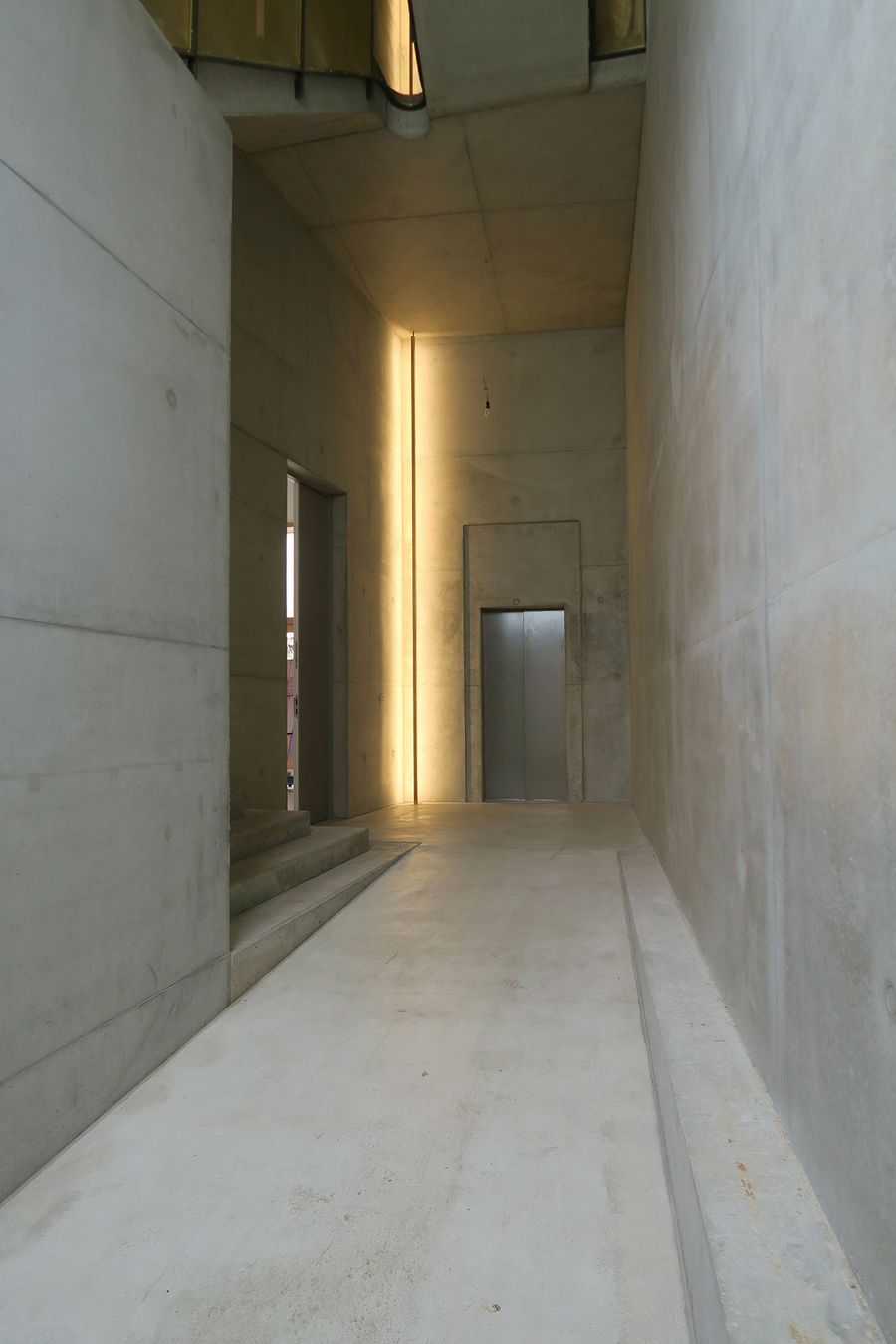
Photography © Atelier PhvM.
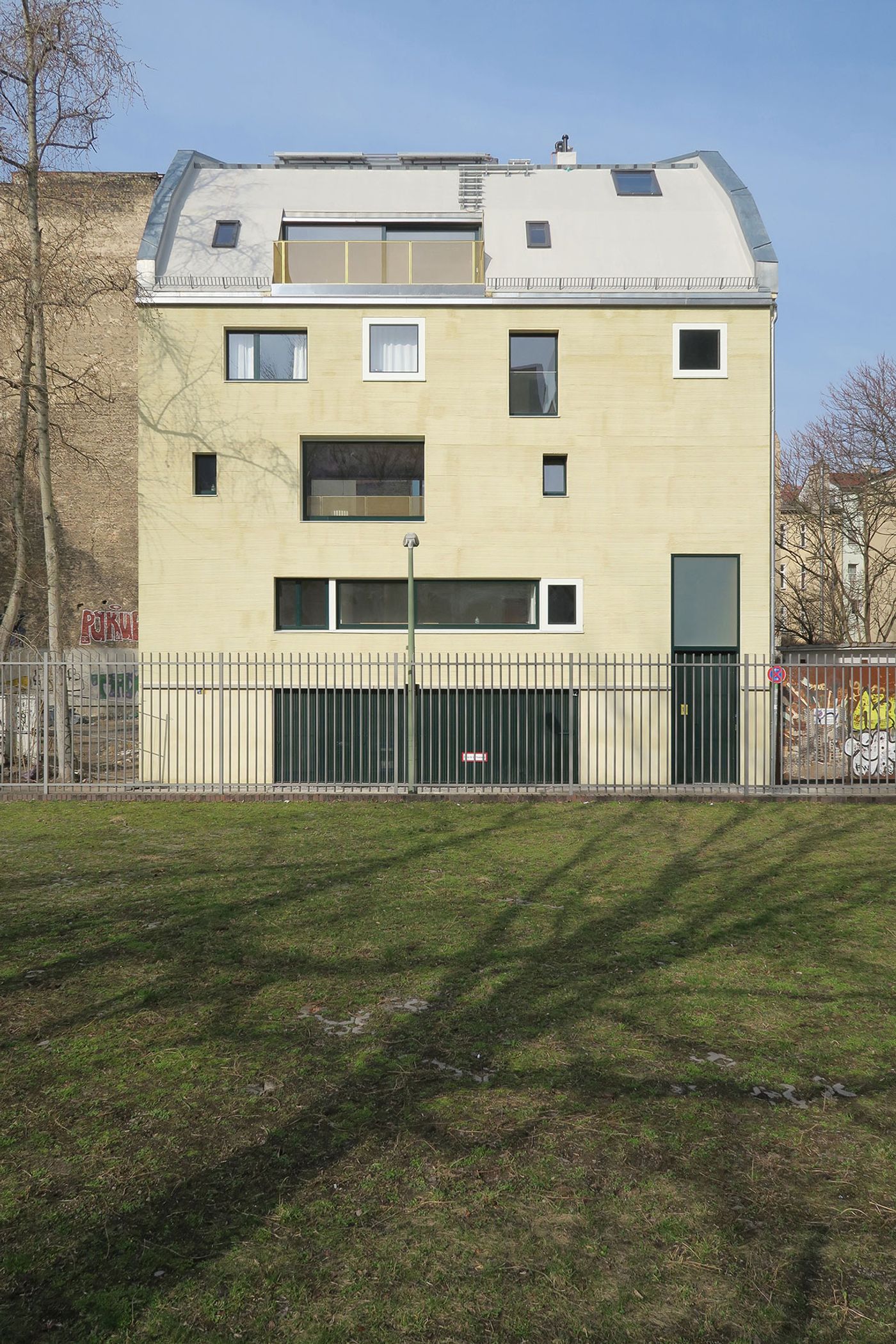
Photography © Atelier PhvM.

Photography © Atelier PhvM.

Photography © Atelier PhvM.

Photography © Atelier PhvM.
Upon entering, visitors are taken aback by the monumental concrete staircase that vertiginously rises to the top of the narrow, atrium-like space. Illuminated from the top, the sinuous concrete volumes, delineated by slender latticed bronze balustrades, evoke a sense of wonderment akin to the atmosphere of Piranesi’s drawings. The compactness of the staircase volume makes the grand, light-filled spaces it leads off all the more impressive.
On the ground floor, a sparsely furnished, stripped down space that functions as an exhibition space opens up to a garden via enormous window-cum-patio doors. A neutral colour palette of grey tones makes for the ideal backdrop for art displays while the exposed concrete surfaces are subtly juxtaposed with the verdant views of the garden.

Photography © Atelier PhvM.

Photography © Atelier PhvM.

Photography © Atelier PhvM.

Photography © Atelier PhvM.

Photography © Atelier PhvM.

Photography © Atelier PhvM.

Photography © Atelier PhvM.
Warmer tones are used for the living and dining area on the first floor, a double height space that also features enormous window-cum-patio doors serving a narrow balcony. Hardwood floors, mustard-painted walls and wooden furniture create a cosy ambience while an undulating board-form concrete volume housing the second-floor bedrooms and a triangular fireplace (inspired by Cestius’ pyramid in Rome and Antonio Canova’s tomb in Venice) imbue the space with a monumental quality. In the kitchen next door, an earthy palette of terracotta tiles, wicker furnishings, ceramic vessels and timber floorboards create interesting combinations in conjunction with the building’s exposed concrete structure.

Photography © Atelier PhvM.

Photography © Atelier PhvM.

Photography © Atelier PhvM.

Photography © Stefano Tiracchia.

Photography © Atelier PhvM.
On the top floor, the artist’s atelier is inundated with natural light, courtesy of a large skylight crowning the space. Minimalist in design, it’s the most intimate and secluded room in the house, with no windows to minimize distractions, except for a balcony door framing Berlin’s iconic TV tower. With a sense of place being so crucial for both an artist and architect, the atelier’s balcony not only offers a scenic spot to take a break from the turmoil of artistic creation, it also embodies the project’s dialectic tension between art and architecture.

Photography © Atelier PhvM.

Photography © Atelier PhvM.
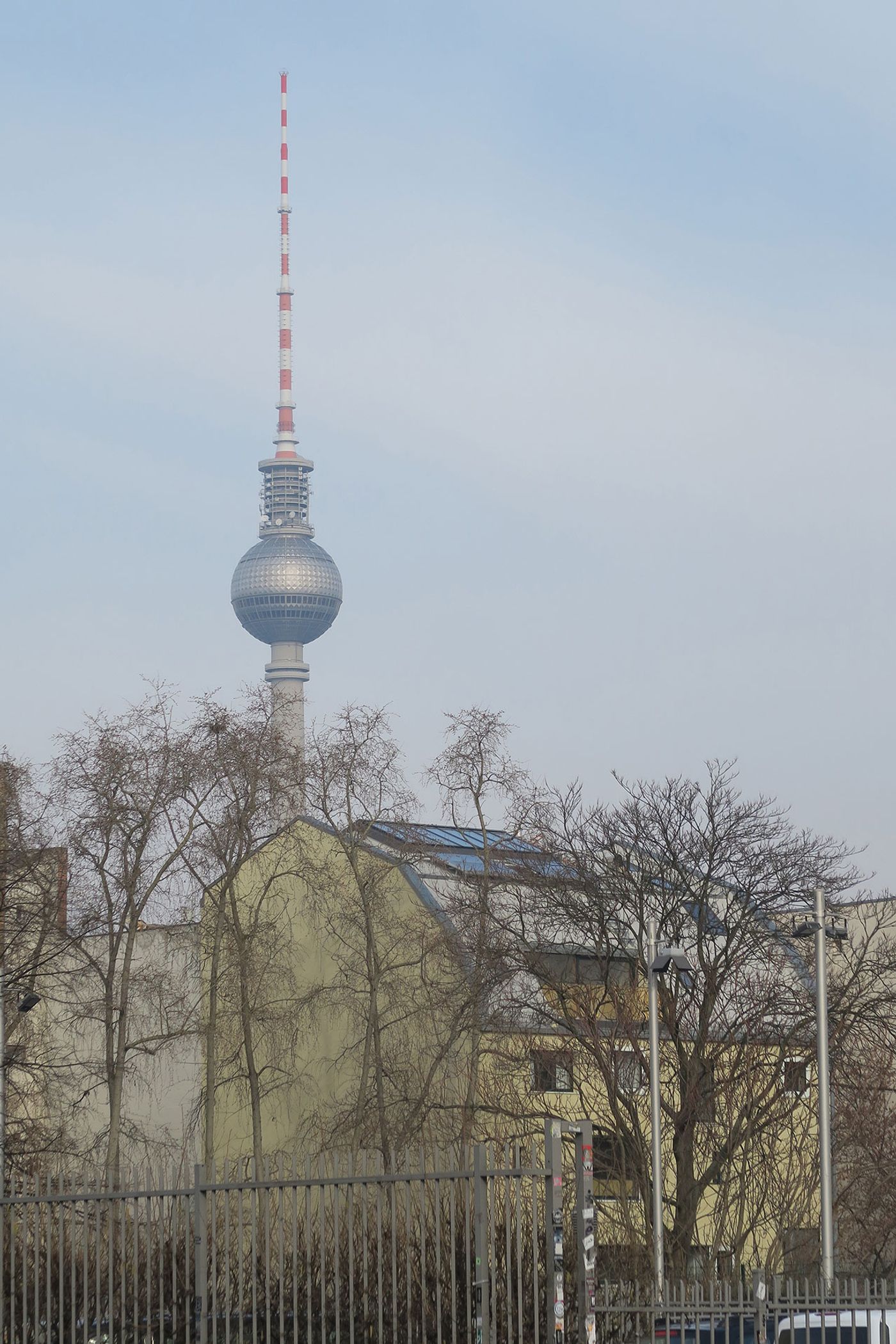
Photography © Atelier PhvM.
